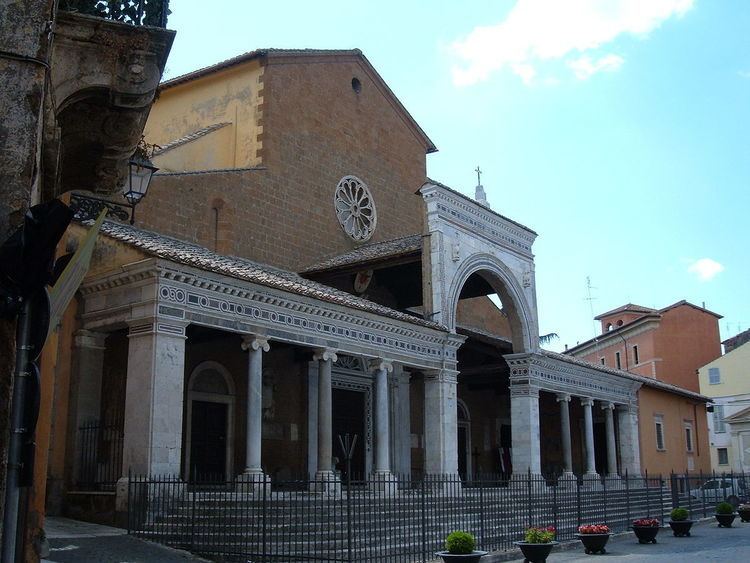Province Province of Viterbo | Phone +39 0761 513779 | |
 | ||
Similar Museum Forte Sangallo, Nepi Cathedral, Basilica di Sant'Elia, Museo Archeologico Etrusco‑Romano, Museum of Patologic Anatomy | ||
The Cathedral of Civita Castellana (Italian: Cattedrale di Santa Maria Maggiore of Santa Maria di Pozzano) is a church in Civita Castellana, central Italy.
Contents
History
The edifice was built from around 1185, over a pre-existing church, and was completed with the construction of the portico in 1210. The latter saw the intervention of the Roman architect and marble workers family of the Cosmati.
After centuries of decay, in the 18th century the church was totally restored and the interior was renovated in Baroque style. The two aisles were turned into side chapels, communicating with each other, thus keeping only a single nave. A plaque on the building's exterior commemorates Wolfgang Amadeus Mozart's sojourn in Civita Castellana on 17 July 1770: he also played the cathedral's organ in the Sunday mass of that day.
Exterior
The church is preceded by a 13th-century portico, in whose architrave was once a mosaic frieze with gilded letters. Today only few fragment of the latter can be seen. Two central piers support a rounded arch, in which is the writing “Gloria in excelsis Deo…”, while another inscription at the top contains the name of the portico's designer, "IACOBUS CIVIS ROMANUS" ("James, citizen of Rome") and the date of execution (1210). The central and final piers of the portico are decorated with the marble symbols of the Four Evangelists, while in the middle of the arch is a lamb, symbolizing Jesus Christ.
The cathedral has three entrance gates. The central one is sided by four Corinthian columns, two of which lying on marble lions. Under the right lion is the representation of a child, a symbol of the faithful entering the church. The lunettes over the side gates have Cosmatesque mosaic decorations; the right lunette has also the representation of the "Blessing Christ".
The cathedral has a Romanesque bell tower.
Interior
The church has a single nave, with side chapels which communicate with each other. The nave ends in a transept which precedes the raised presbytery, under which is the crypt.
In the transept's arms are two monumental Baroque altars: the right one is dedicated to the Madonna of the Light, and incorporates an 11th-century fresco; the left-hand altar is dedicated to the Madonna of the Rosary, and has a 16th-century canvas surrounded by 15 panels, depicting the mystery of the rosary.
The presbytery is home to one of the most precious works of art in the church, the high altar. It consists of a 4th-century Roman-Palaeochristian sarcophagus with seven niches which are decorated by biblical episodes. At the end of the presbytery, over the wooden choir, is a canvas by Pietro Nelli (Annunciation), while at the sides are two frescoes of the Resurrection of John and the Martyrdom of Sts. John and Marcianus.
A door on the left side of the presbytery leads to the oratory of Mary's Heart, built as a chapel in the 14th century. This houses important medieval works including:
Under the presbytery is the crypt, with cross-vaults, dating to the 12th century but renewed later. It houses two Renaissance marble cyboria, originally in the presbytery but walled here during the 18th-century renovation works.
